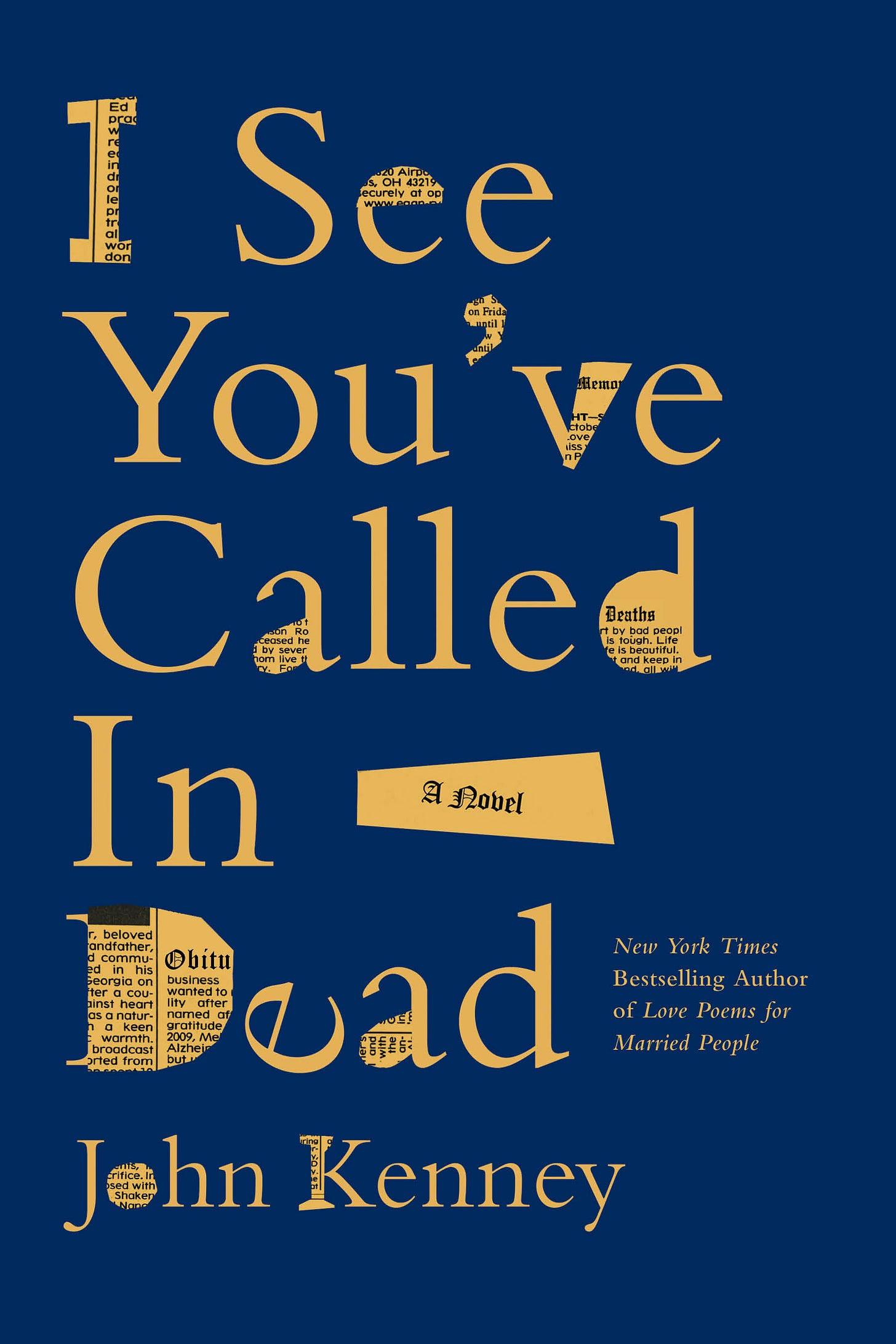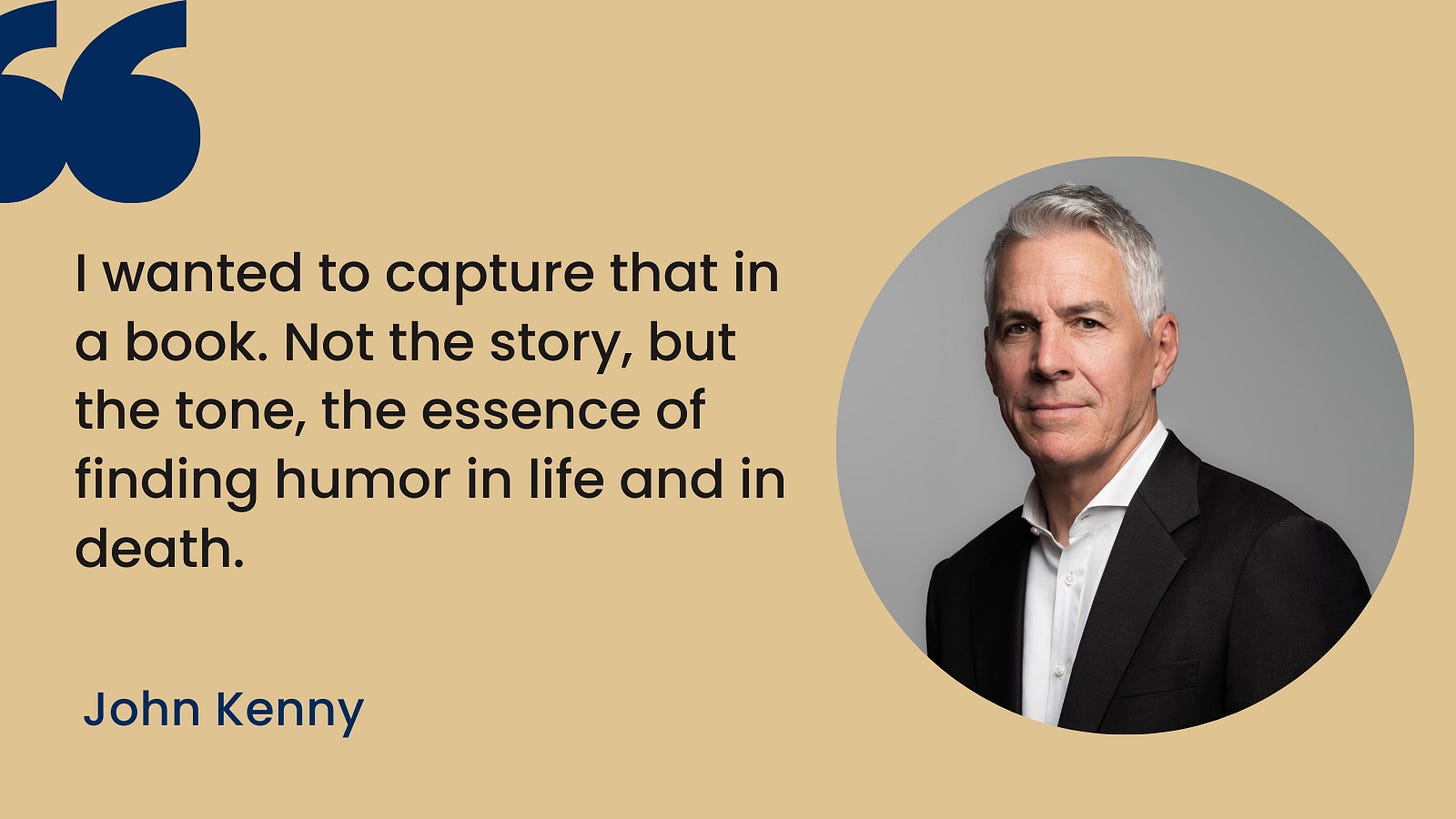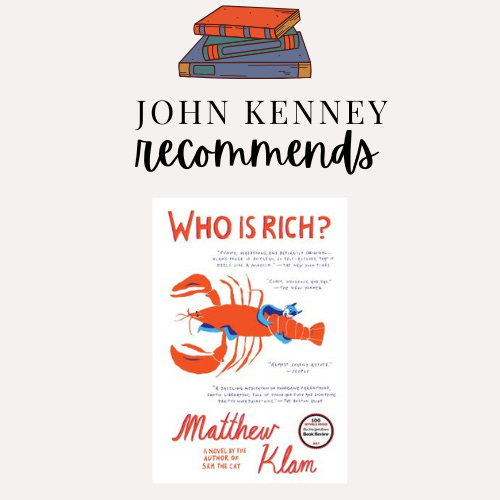This week I’m sharing a Q&A with John Kenney, author of I See You’ve Called in Dead, a hilarious and moving coming-of-middle-age tale that will have you alternating between holding back tears and laughing out loud. It’s one of the most memorable reading experiences I’ve had in ages.
"Wise, wry, and heartfelt, I See You Called in Dead is the most life-affirming novel about death you'll ever read—and possibly the funniest. Kenney takes his hero, a middle-aged obituary writer in a rut, on a bumpy odyssey toward understanding that grief and joy are inextricably linked, and to try to separate them is to miss out on truly living. I adored this book!"—Jane Roper, author of The Society of Shame
There is such a strong hook for I See You’ve Called in Dead - what gave you the idea to focus on this obituary writer, Bud Stanley, trying to rewrite his life story?
It came from the last time I saw my brother, Tom. He was in the final stages of cancer, but home, well cared for. My four other brothers and I planned a final visit. I arrived first. Tom was in a lounge chair, too thin now but smiling. We talked for a bit when I heard a car pull into the driveway and looked out the window. “The others are here,” I said to Tom. With Buster Keaton timing, stone-faced, Tom dropped an arm over the side of the chair, let his head fall to one side, and, trying to suppress a grin, said, “Tell them they’re too late.” I wanted to capture that in a book. Not the story, but the tone, the essence of finding humor in life and in death.
Did you do any research for this novel? (Or crash any funerals like Bud?)
A bit. I spoke with to two obituary writers. I Googled a lot about death. Death in different cultures. Customs around death. I read the Tibetan Book of Dying. Which is pretty life-affirming. Went to one wake and one funeral (but did not crash).
An earlier novel of yours, Truth in Advertising, also focused on a character in mid-life evaluating their choices. Why do you think this is such a rich period in a character's life to focus on?
I think for a lot of people you come to the edge of a cliff. By that I mean you’ve likely done a fair amount of the things you’d hoped to do, planned to do, that society sort of tells you to do. You’ve gone to school and moved to another city and had relationships and likely married and had children. You’ve had a few jobs. Maybe you’re moving up a bit at a job. Someone close to you has likely died. You’ve crossed well into adulthood. Long past the easy days of your 20s. You’ve see things. You’ve been in hospital rooms. You’ve gone to a few wakes. And maybe, maybe, you’ve come to question some things. The meaning of life. The idea of death. I think a lot of fascinating interior monologue happens in the 3am of the soul in midlife, the kids asleep, the job awaiting the next day.
I received many stares in public reading this book as I alternated between laughing out loud and tearing up. Do you actively think about weaving together the levity and more profound moments or does that come naturally in your creative process?
It’s not planned. They are emotions I am fond of. I think, like any emotionally stunted person, I escape the deeply sad with humor. A kind of pressure release valve. I am someone who doesn’t cry at wakes and funerals. I just buried one of my brothers and shed not a single tear. And then, sitting in at home, listening to a version of Pachelbel’s Canon in D, I started sobbing.
What was the last book you read that made you laugh out loud?
Who Is Rich by Matthew Klam. Just superb and very funny. I have a very hard time with fiction that doesn’t, in places, make me laugh.
About the Author: John Kenney is the author of three novels and four books of poetry, including LOVE POEMS FOR MARRIED PEOPLE. His first novel, TRUTH IN ADVERTISING, won the Thurber Prize for American humor. He is also the author of TALK TO ME, which received a starred Kirkus review. He is a long-time contributor to The New Yorker magazine’s Shouts & Murmurs. He lives in Larchmont, NY, with his wife, Lissa, and two children.







